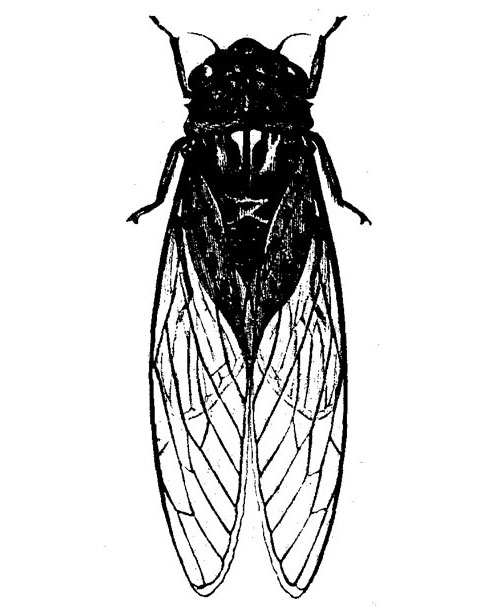

Zemi or Semi in Japanese means Cicada or the insect Jangkrik in Indonesian.
Cicadas are flying, plant-sucking insects of the Order Hemiptera. There may be as many as 3000 different cicada species worldwide. Adult cicadas tend to be large (most are 25-50mm), with prominent wide-set eyes, short antennae, and clear wings held roof-like over the abdomen. Cicadas are probably best known for their conspicuous acoustic signals or "songs", which the males make using special structures called tymbals, found on the abdomen. Some cicadas produce sounds up to 120 dB, among the loudest of all insect-produced sounds. This is especially notable as their song is technically loud enough to cause permanent hearing loss in humans, should the cicada sing just outside the listener's ear (unlikely).
All but a few cicada species have multiple-year life cycles, most commonly 2-8 years (de Boer and Duffels 1996). In most cicada species, adults can be found every year because the population is not developmentally synchronized; these are often called "annual" cicada species. In contrast, populations of the periodical cicada species are synchronized, so that almost all of them mature into adults in the same year. The fact that periodical cicadas remain locked together in time is made even more amazing by their extremely long life-cycles of 13 or 17 years.
In America this special kind of Cicada that only appears above ground for 30 days every 17 years is called the Magicicada (or Periodical Cicada). Their aboveground life consists solely of singing, procreating and dying. These specific cicadas are part of many native mythologies and beliefs. Shamans would use their bodies in magical and healing medicines; artists and holy people would depict cicadas often as symbols of resurrection, and rebirth. There are still tribes of people that place the body of a dead Magicicada under the tongue of deceased relatives before being berried in the ground. They believe the cicada spirit will guide them through the Death Bardo and ultimately bring their souls to earth or heaven when the Cicadas appear again 17 years later.
For more information about Cicadas, we recommend The University of Michigan Museum of Zoology Insect Division Site